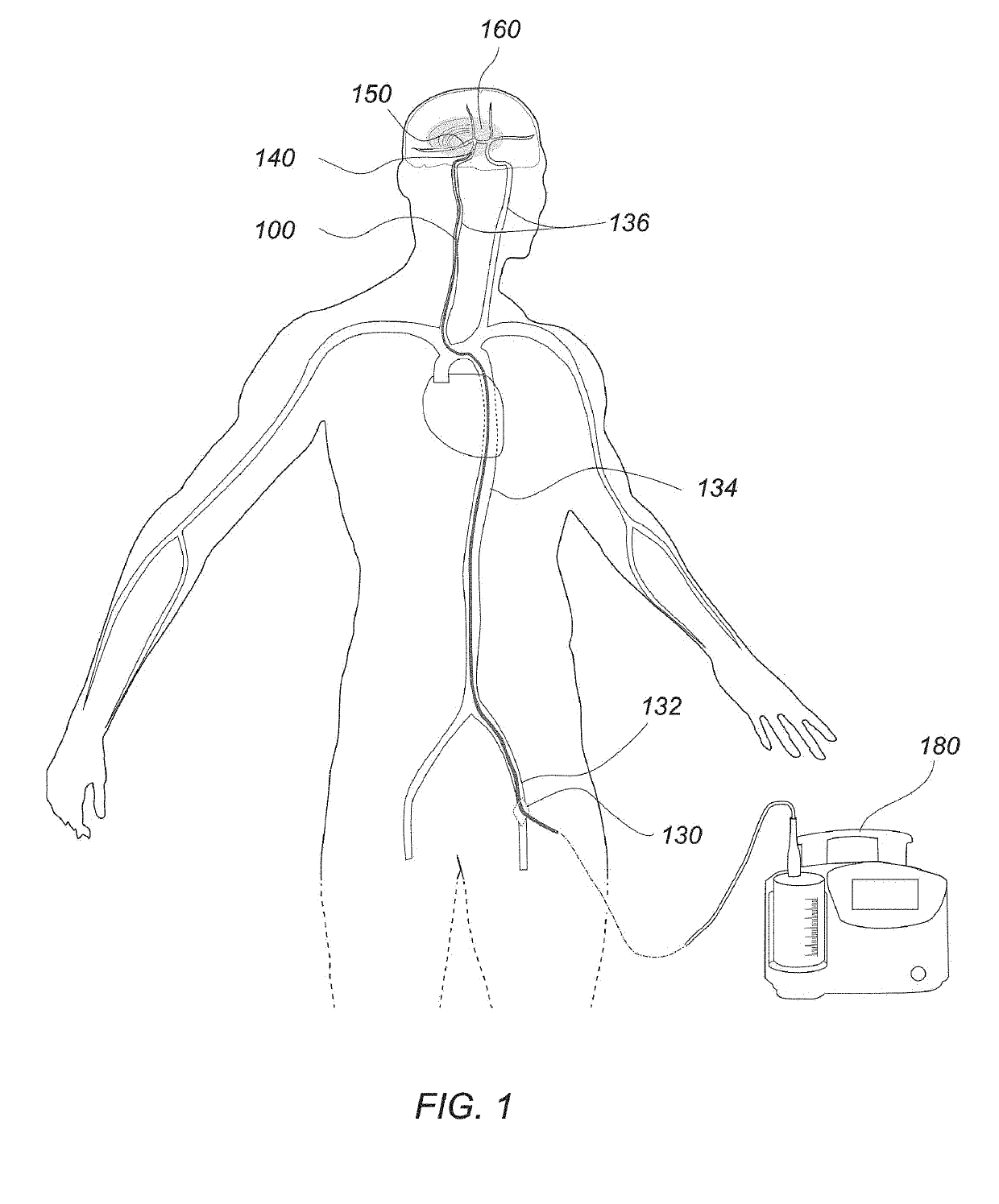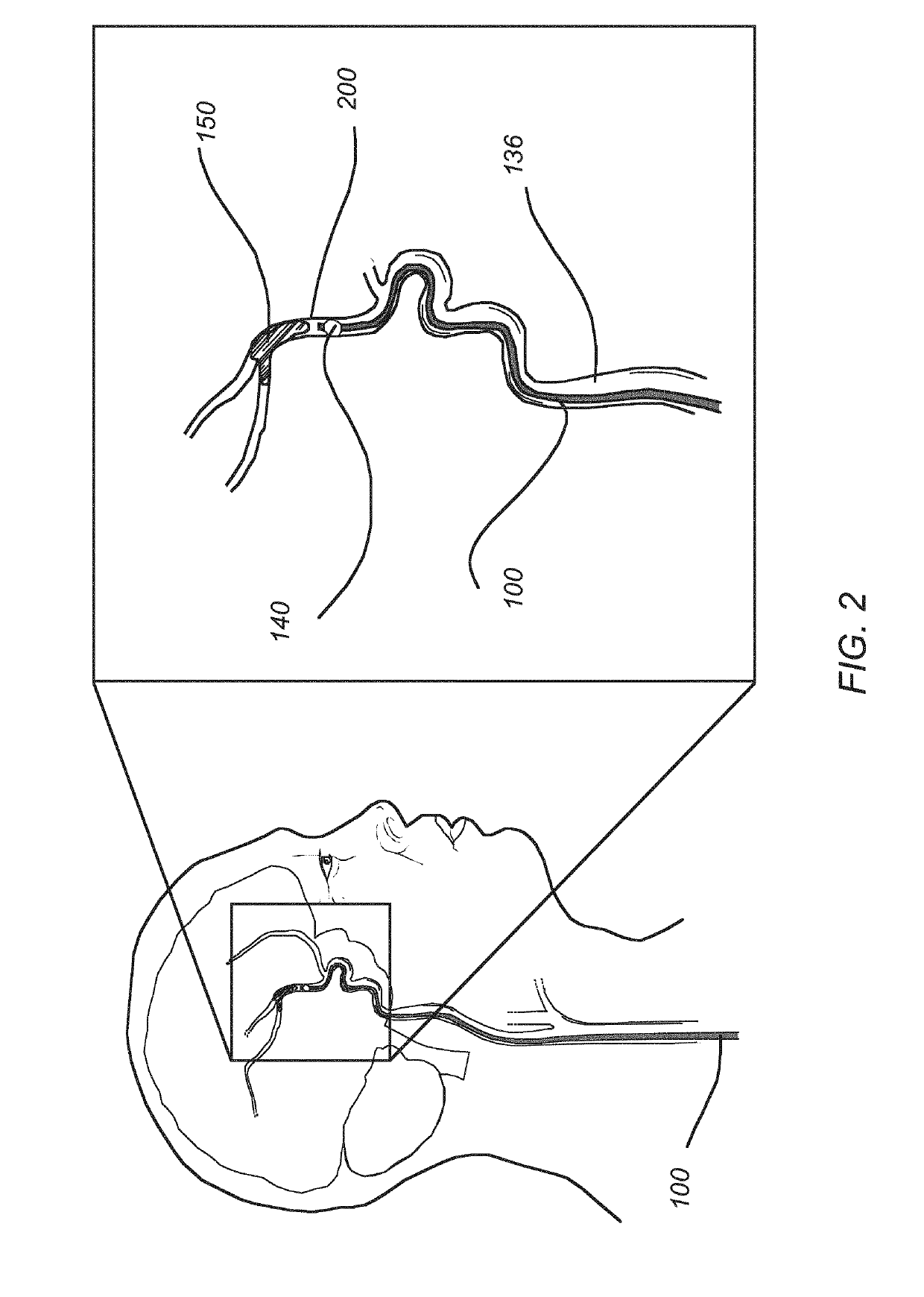Post-conditioning suction catheter apparatus and methods
a technology of suction catheter and suction catheter, which is applied in the field of post-conditioning suction catheter apparatus and methods, can solve the problems of lack of metabolic requirements, tissue damage, and build-up of metabolic waste products, and achieve the effect of enhancing suction capabilities and removing clots
- Summary
- Abstract
- Description
- Claims
- Application Information
AI Technical Summary
Benefits of technology
Problems solved by technology
Method used
Image
Examples
Embodiment Construction
[0049]Apparatus and methods of treating patients suffering from cardiovascular maladies encompassing embolisms and thromboembolisms may be used to create a temporary vascular occlusion in combination with suction of emboli. Particularly, instruments and methods for enhanced suction of emboli, the combined activity of inflating balloons in the diseased vessels, once or multiple times, concomitantly or sequentially with applying vacuum to dislodge and remove thrombus or emboli in the vasculature may be used.
[0050]Generally, a balloon catheter having enhanced suction capabilities for providing proximal and distal embolic protection may be used to create flow reversal within the vessel to remove clots. The additional method of post-conditioning may be incorporated with the treatment as well. Furthermore, methods of dilating the vessel, e.g., via balloon inflation, may also be optionally included to slightly dilate the vessel to help dislodge clots trapped within the vessel lumen.
[0051]I...
PUM
 Login to View More
Login to View More Abstract
Description
Claims
Application Information
 Login to View More
Login to View More - R&D
- Intellectual Property
- Life Sciences
- Materials
- Tech Scout
- Unparalleled Data Quality
- Higher Quality Content
- 60% Fewer Hallucinations
Browse by: Latest US Patents, China's latest patents, Technical Efficacy Thesaurus, Application Domain, Technology Topic, Popular Technical Reports.
© 2025 PatSnap. All rights reserved.Legal|Privacy policy|Modern Slavery Act Transparency Statement|Sitemap|About US| Contact US: help@patsnap.com



